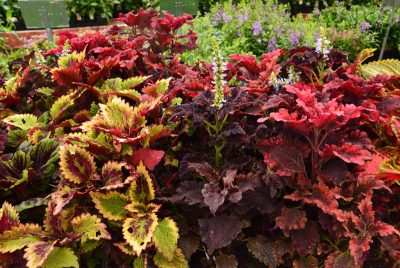Gravel in the Garden: Good, Bad & The Ugly
encore date: July 14, 2018
original air date: July 16, 2016
Ecological landscape designer Elizabeth McGreevy from Droplet Land Design examines why a total gravel landscape disrupts the water and nutrient cycle. Discover her best practices for gravel in the garden. On tour in Hudson Bend above Lake Travis, Bruce McDonald saw the lake vanish before his eyes. To respond to drought, he ripped out his front lawn for waterwise plants. In back, he cleared a wildfire jungle for serene outdoor living rooms around ponds fed with rainwater collection. Are critters chomping your peaches? Daphne shows how gardener Christina Pasco protects her organic peaches with a simple trick. Pep up containers and shady beds with vivid coleus. Got chiggers? John Dromgoole’s got the easy remedy for them, plus tips for grub worm control.

